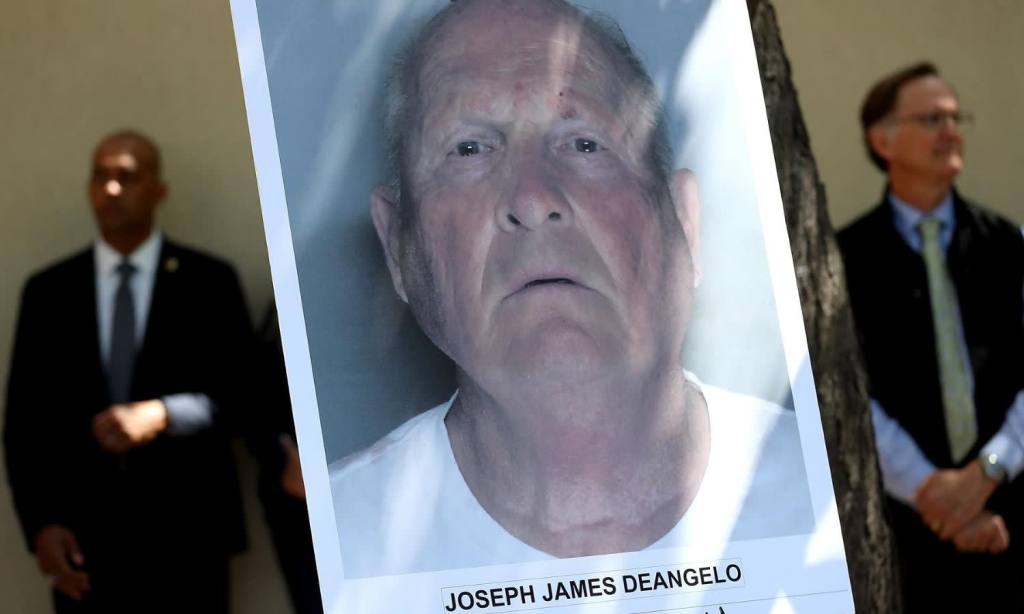Crime buffs are hooked on the new series, I’ll Be Gone In the Dark. The six-part HBO documentary, which you can now stream on Binge, explores true crime author Michelle McNamara’s search to uncover the identity of the serial murderer she named the “Golden State Killer”.
Responsible for at least 13 murders, more than 50 rapes and over 100 burglaries in California from 1974 to 1986, the Golden State Killer was finally captured and unmasked as Joseph DeAngelo.
The show is as much about the capture of DeAngelo as it is about McNamara, who suddenly passed away in 2016 at the age of 46.
Before then, McNamara lived a double life. By day she was married to actor and comedian, Patton Oswalt, and had a daughter, Alice (who was seven at the time) and by night, she would investigate and research pieces of information from police files looking at one of the most prolific killers in US history.
Before McNamara, DeAngelo had been given several nicknames — “East Area Rapist”, the “Original Night Stalker”, and the “Visalia Ransacker, however, people were unsure if he was indeed the same person.
The writer’s work brought together all pieces of the puzzle, information which would later help bring down DeAngelo.
Before you binge, I’ll Be Gone In the Dark, let’s take a look at who The Golden State Killer is.
Who is Joseph James DeAngelo Jr?
Joseph James DeAngelo Jr joined the police force when he was 27-years-old after obtaining a criminal justice degree from California State University.
In a 1973 article, published in the Exeter Sun, DeAngelo said that “without law and order there can be no government and without a democratic government there can be no freedom.”
His parents, a waitress and a welder brought him up in Central Califonia — where his killing spree took place.
Before his employment as an officer, DeAngelo served on the USS Canberra as a repairman during the Vietnam War. According to the Sacramento Bee, a neighbour said that he had lost a finger on the job.
In November 1973, he married another officer, Sharon Marie Huddle and they had three daughters. The couple’s marriage eventually broke down.
During that same period of 1974 – 1976, the town of Visalia, which was 16km away), experienced a number of burglaries and an (unsolved) death of a college professor.
According to the Washington Post, the “Visalia Ransacker” wore a mask and invaded 85 homes taking coins and jewellery “and placed dishes in the homes as noise alarms” — both a trademark of the Golden State Killer.
At the time, no suspicion was ever placed on DeAngelo, who took a job with the Auburn Police Department, about 57 km from Sacramento.
That summer, Sacramento women were raped in their homes — including a 13-year-old girl.
By 1979, his moniker had changed to the East Area Rapist.
Los Angeles Magazine said he was “as meticulous as he was violent”. DeAngelo would case properties, disable locks and would even jump roofs to escape if he was caught.
From July onwards that same year, DeAngelo made the paper for a number of robberies, even tying an officer to a chair after he was caught with items in his pants.
He promptly kicked off the force. After his firing, the East Area Rapist’s habits changed considerably. DeAngelo changed the area that he was working in, reappearing in Southern California. Now, his victims would no longer be left alive.
Here, he was called the Original Night Stalker, before then being coined the Golden State Killer by McNamara.
Between 1979 and 1981, 12 homicides were committed. The women were raped, shot or beat to death and their husbands or boyfriends killed as well.
Five years went by, and DeAngelo killed one last time.
In 1986, an 18-year-old woman was raped and bludgeoned in Irvine, near Los Angeles. He then disappeared.
According to the Washington Post, DeAngelo lived in a house in Sacramento. He worked in a warehouse job for the next 27-years, where he was described as a “regular Joe”.
In 2017, he retired and even lived with his daughter and granddaughter until his arrest in April 2018.
How was he arrested?
In 2016, on the 40th anniversary of his first known assault, FBI and California officials renewed their search, announcing a $USD 50,000 ($AUD 67,000) reward for his arrest.
A DNA match in 2018 then tied DeAngelo (72 at the time), to crimes committed by the Golden State Killer.
He was arrested on suspicion of committing four killings in Sacramento and Ventura counties and charged with two counts of murder in the Ventura case.
“We knew we were looking for a needle in a haystack, but we also knew that needle was there,” Sacramento County District Attorney Anne Marie Schubert said in a press conference at the time.
“The answer was always going to be in the DNA.”
In June 2020, DeAngelo “admitted” he was “guilty” while he was being tried as part of a plea agreement that spared him the death penalty.
Instead, the Golden State Killer was given a sentence of life without parole.
Watch I’ll Be Gone In the Dark on Binge, streaming now.
Read more stories from TheLatch— and follow us on Facebook.

